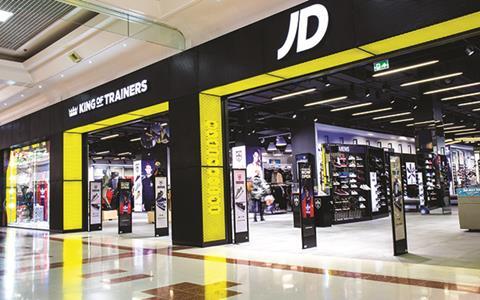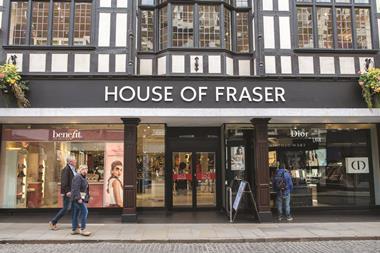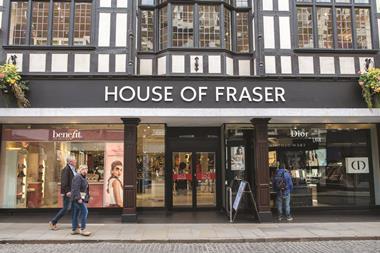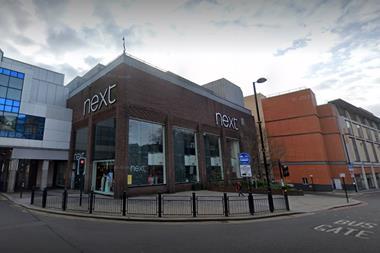Barely a week goes by without another story on the state of the UK retail market. The volume of CVAs and frequency of headlines would have many believe the end of retail is nigh, but a more balanced discussion is required.

While it is true that the backdrop is one of accelerating structural change and the market feels materially different to a traditional property cycle, there is good reason to have a glass-half-full perspective. Logic dictates that for every loser, there must be a winner. When Woolworths disappeared from the UK high street, there were a number of value offers including B&M Bargains, Poundland and Iceland that filled the void. The market in 2018 is, however, a horse of a different colour to 2008. The key question now is whether a contraction in the number of retailers will allow others to benefit from a larger market wedge of a smaller consumer pie.
How will competing toy retailers trade on a like-for-like basis, given the state of Toys R Us? The same could be said of burger chain operators, given Byron’s predicament, ladies fashion operators given New Look’s outlook or value operators post Poundworld’s CVA. How can landlords capitalise on the displacement of concession brands in House of Fraser stores for example? If this is a game of survival of the fittest, those better placed to adapt are more likely to succeed.
The A3 market grew rapidly between 2010 and 2015 as a result of a change in consumer habits and supply/demand economics that pushed rents on an upwards trajectory. Demand was strong enough that landlords could have the option of which occupier to run with due to the number of underbidders. The speed of growth and an insatiable appetite for operators to expand led to a greater proportion of A3 leases being granted outside the 1954 Act in what was a landlord’s market. Fast forward to today, and the supply/demand balance has shifted, with some locations over-supplied. If there are too many players in the market, a reduction in competition should be helpful to those left at the party once others disappear.
Playing poker
A poker game is about playing the best hand with the cards dealt. Value retailers, coffee chains, value supermarkets, hotels and leisure operators (including gyms and cinemas) are all acquiring, albeit highly selectively. The winning landlords will pick the best locations and right type of space for expanding occupiers. Australian jeweller Lovisa has more than doubled its share price in the last 12 months. The share prices for Domino’s and JD Sports have increased threefold and fourfold respectively since 2015. This suggests negative stories on the state of the retail market do not paint the full picture.

It could be argued that today is the perfect opportunity to create a new retail business, adopting the mantra to be bullish when others are bearish and bearish when others are bullish. New retailers do not have legacy issues of too many stores in the wrong locations or a portfolio that has not kept pace with rapidly-changing consumer needs. New entrants will have more flexible terms, on more sustainable rents, with the ability to better meet consumer trends. It is less challenging for a new entrant to connect with an omnichannel environment than a long-standing retailer with more than 100 stores due to the capital expenditure required to upgrade at scale. Globally, more than 200 e-tailers have taken physical space as new businesses can be more selective and flexible.
“It is less challenging for a new entrant to connect with an omnichannel environment than a long-standing retailer with more than 100 stores”
Not only will there be occupational winners and losers, but the same is true of landlords. Those that outperform will have thoughtfully planned for the months and years ahead. CVAs are less of an issue where they have been carefully predicted and suspected for some time. The retail environment is playing out in a similar fashion to Darwin’s theory of evolution by natural selection, as failing retailers assist in shaping retail space for the future.
Performance today is a result of investment business plans put in place 18 months ago. At Aviva Investors, our retail investment strategy is predicated on a clear vision of a real estate market that looks very different to today’s. We are pursuing a strategic drive towards investing in durable property in locations with strong catchments, high store productivity and resilience to the inevitable rise of ecommerce. Knowing one’s customer and understanding their needs has never been more important. Warren Buffet’s mantra – you only find out who is swimming naked when the tide goes out – rings true. Equally it can be argued that since fortune favours the brave, whisper it quietly, volatility breeds opportunity.
Darren Freed, director – real estate, Aviva Investors Real Assets






























No comments yet